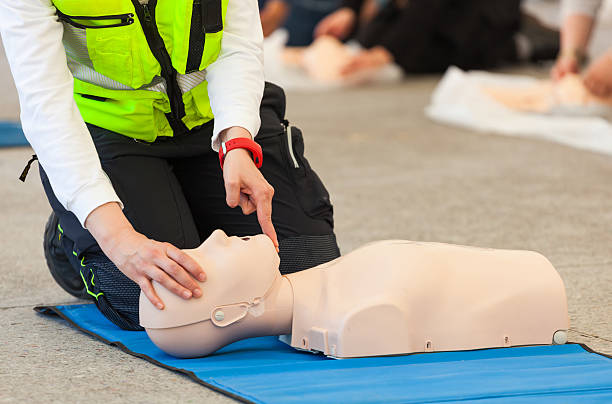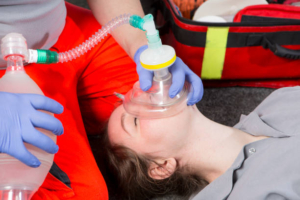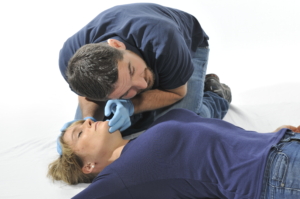
BLS Training in Vancouver, A Dive into Basic Life Support – Alert First Aid
In times of emergency, acting swiftly and effectively can be a lifesaver. Alert First Aid, offers a BLS Training program in Vancouver that equips individuals with the essential skills needed to respond to heart and breathing crises. In this article, we’ll take a closer look at the course, highlighting its main parts and practical skills.
Understanding BLS
Let’s start by defining Basic Life Support (BLS). BLS is the immediate care given to someone experiencing a heart or breathing emergency. It’s a crucial step provided by responders, whether they’re in a healthcare facility or responding in pre-hospital situations.
We’ll also discuss the shift from CPR HCP (Healthcare Provider) to BLS, emphasizing the importance of standardized training nationwide. These standards ensure that BLS training is consistent and of high quality across the country.
BLS Roles and Responsibilities of Responders
Instructors stress teamwork in effective CPR. The team leader coordinates efforts, assigns roles, intervenes promptly, and minimizes interruptions.
Recertification and Legal Considerations
Participants will learn about the recertification period and why ongoing training is essential to maintain top performance. Basic Life Support certification remains valid for one year, and recertification takes only two hours.
We’ll also discuss the legal aspects of providing care, covering topics like obtaining consent from both responsive and unresponsive patients, implied consent, and the duty to continue care once it has started. We’ll also introduce advance directives, which outline an individual’s healthcare preferences.
Personal Protective Equipment (PPE)
We’ll emphasize the importance of Personal Protective Equipment (PPE) and provide examples of PPE used in the course, such as gloves, pocket masks, and Bag Valve Masks (BVMs). We’ll also remind participants of the critical role hand hygiene plays when using PPE.
BLS Patient Assessment Model

We’ll introduce the Patient Assessment Model, which includes two key components:
- Scene Assessment: Participants will practice assessing the scene for potential hazards, determining the mechanism of injury (MOI) or chief complaint (C/C), and considering Spinal Motion Restriction (SMR) when applicable.
- Primary Assessment: We’ll explain the importance of assessing the patient’s level of responsiveness using the AVPU scale and encourage hands-on practice for participants to gain confidence in using AVPU. The primary focus will be on the initial assessment of the patient’s airway, breathing, and circulation (ABCs).
Airway Emergencies
Our instructors will guide participants in responding to airway emergencies, with a specific focus on conscious obstructions. We’ll differentiate between anatomical and foreign body airway obstructions and teach interventions for both responsive and unresponsive patients.
Hands-on Practice: Choking Scenarios (Skill Scenario)
Participants pair up and practice responding to choking scenarios, covering the sequence of actions to take when dealing with complete and partial airway obstructions.
Landmark Practice
Before practical exercises, participants ensure they have a clear understanding of landmarks for back blows, abdominal thrusts, and chest thrusts. This prepares them for hands-on practice during choking scenarios.
Breathing Emergencies
This section will delve into breathing emergencies, and participants will practice essential skills, including:

- Head Tilt-Chin Lift (HTCL) and Jaw Thrust with Pulse Check: Participants will learn how to assess the airway and perform these maneuvers to ensure proper airflow.
- Bag Valve Mask (BVM) for Adults, Children, and Infants: Practical exercises with BVMs will prepare participants for providing ventilation to patients of different age groups.
- CPR (Cardiopulmonary Resuscitation): Hands-on practice of CPR techniques for adult, child, and infant patients is a critical component of the training.
Circulation Emergencies (30 min)
Participants apply their skills in various scenarios, covering adult, child, and neonate patients, including spinal injuries.
Return of Spontaneous Circulation
Instructors guide participants on what to do when a patient’s circulation returns, highlighting post-event procedures and documentation.
Special Considerations
Finally, the lesson plan will touch on special considerations that may arise during emergencies, ensuring that participants are prepared to adapt their skills to unique situations.
The BLS training in Vancouver offered by Alert First Aid equips participants with the knowledge and skills needed to respond effectively in life-threatening situations. By providing a comprehensive understanding of BLS principles and ample hands-on practice, this training ensures that individuals are well-prepared to make a difference when it matters most. Whether you’re a healthcare professional or a concerned citizen, BLS training is a valuable asset for anyone looking to save lives and contribute to safer communities. Check our BLS available courses by Clicking Here and be one more Life-Saving Heroe.



